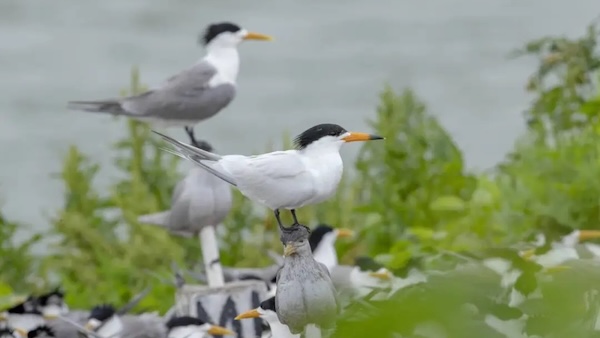Ningbo kicks off biodiversity plan with GEF support
Ningbo, Zhejiang province has launched a significant biodiversity conservation plan with the support of the Global Environment Facility (GEF).
Announced during the recent 2024 International Biodiversity Day event at the Ningbo Botanical Garden, the plan makes Ningbo the first city in Zhejiang to use a GEF grant for biodiversity conservation, with approximately $1 million in funding.
GEF, established by the World Bank in 1990, is dedicated to funding environmentally sustainable projects in developing countries. To date, it has granted over $12 billion in support to more than 3,000 projects worldwide.
A notable example of GEF's impact in Ningbo is the Hangzhou Bay Wetland Protection Project, launched in 2005 with nearly $5 million from GEF and the World Bank. The project has transformed Hangzhou Bay into a vital habitat for wintering waterbirds and a hub for wetland restoration, research, and education.
Over the past two decades, Ningbo has benefited from GEF-backed projects, including those focused on energy efficiency in buildings, urban waste management, and sustainable urban development.
In recent years, GEF has focused on biodiversity conservation. With its unique mix of mountains, forests, rivers, and coastal areas, Ningbo is a biodiversity hotspot. The city is home to 2,183 species of wild plants, 546 species of terrestrial wildlife, and 1,115 species of marine life.
"Biodiversity conservation isn't just for natural reserves. It should be part of urban life too," said Lu Zichuan, an official of the Ningbo Municipal Bureau of Ecology and Environment.
In the city's Yinzhou district, initiatives like micro botanical gardens and small animal habitats are increasing biodiversity in the urban landscape.
Ningbo's future plans involve creating more biodiversity-friendly urban spaces without major disruptions, aiming to seamlessly integrate these initiatives into daily city life. The city is also developing a comprehensive biodiversity strategy and action plan to define conservation goals and key projects through 2035, involving multiple governmental departments in a collaborative effort.

 Ningbo seabird project seeks international volunteers
Ningbo seabird project seeks international volunteers  Jakub's journey: From shipyard to sea
Jakub's journey: From shipyard to sea  Badminton Asia COO applauds Ningbo
Badminton Asia COO applauds Ningbo 


